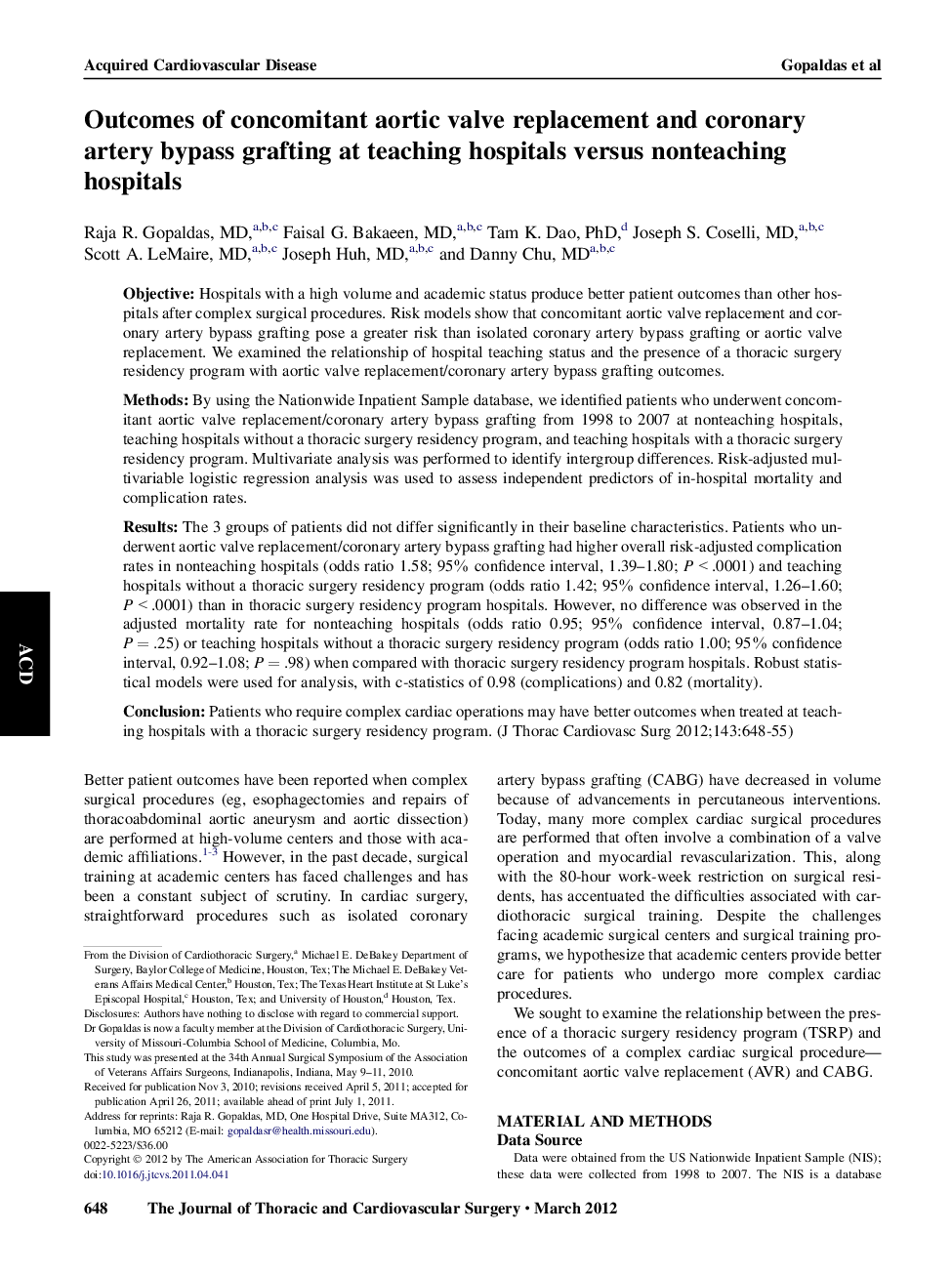| Article ID | Journal | Published Year | Pages | File Type |
|---|---|---|---|---|
| 2982318 | The Journal of Thoracic and Cardiovascular Surgery | 2012 | 8 Pages |
ObjectiveHospitals with a high volume and academic status produce better patient outcomes than other hospitals after complex surgical procedures. Risk models show that concomitant aortic valve replacement and coronary artery bypass grafting pose a greater risk than isolated coronary artery bypass grafting or aortic valve replacement. We examined the relationship of hospital teaching status and the presence of a thoracic surgery residency program with aortic valve replacement/coronary artery bypass grafting outcomes.MethodsBy using the Nationwide Inpatient Sample database, we identified patients who underwent concomitant aortic valve replacement/coronary artery bypass grafting from 1998 to 2007 at nonteaching hospitals, teaching hospitals without a thoracic surgery residency program, and teaching hospitals with a thoracic surgery residency program. Multivariate analysis was performed to identify intergroup differences. Risk-adjusted multivariable logistic regression analysis was used to assess independent predictors of in-hospital mortality and complication rates.ResultsThe 3 groups of patients did not differ significantly in their baseline characteristics. Patients who underwent aortic valve replacement/coronary artery bypass grafting had higher overall risk-adjusted complication rates in nonteaching hospitals (odds ratio 1.58; 95% confidence interval, 1.39–1.80; P < .0001) and teaching hospitals without a thoracic surgery residency program (odds ratio 1.42; 95% confidence interval, 1.26–1.60; P < .0001) than in thoracic surgery residency program hospitals. However, no difference was observed in the adjusted mortality rate for nonteaching hospitals (odds ratio 0.95; 95% confidence interval, 0.87–1.04; P = .25) or teaching hospitals without a thoracic surgery residency program (odds ratio 1.00; 95% confidence interval, 0.92–1.08; P = .98) when compared with thoracic surgery residency program hospitals. Robust statistical models were used for analysis, with c-statistics of 0.98 (complications) and 0.82 (mortality).ConclusionPatients who require complex cardiac operations may have better outcomes when treated at teaching hospitals with a thoracic surgery residency program.
